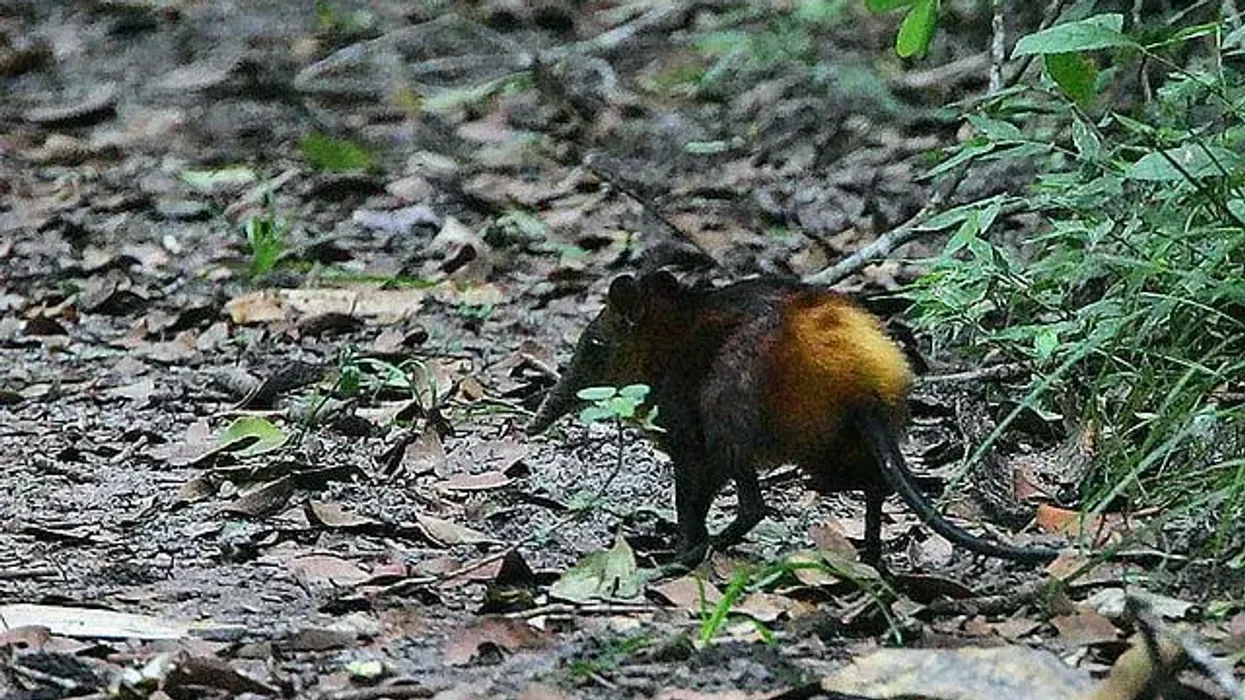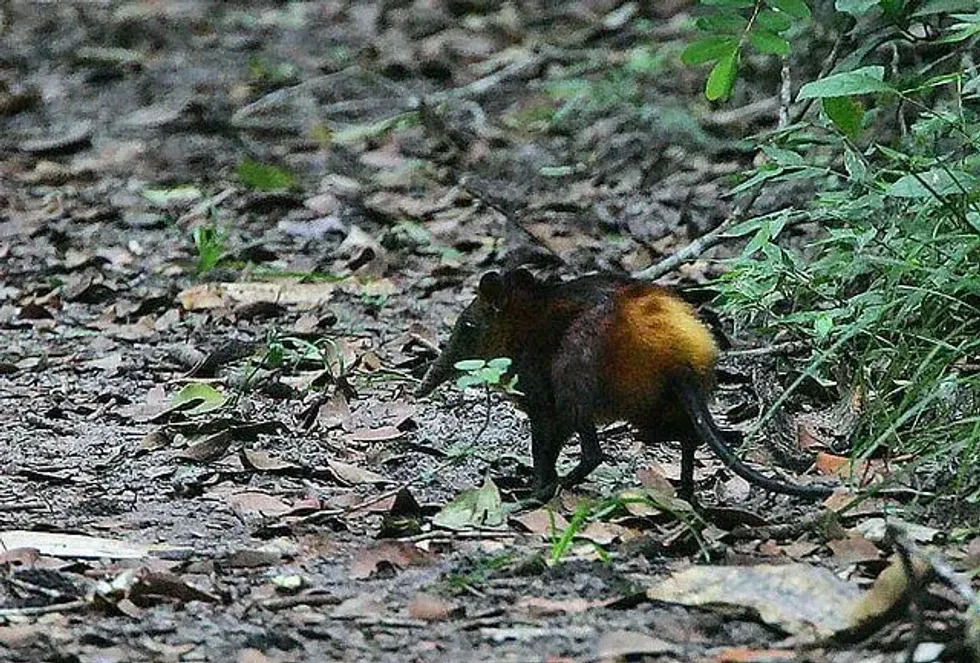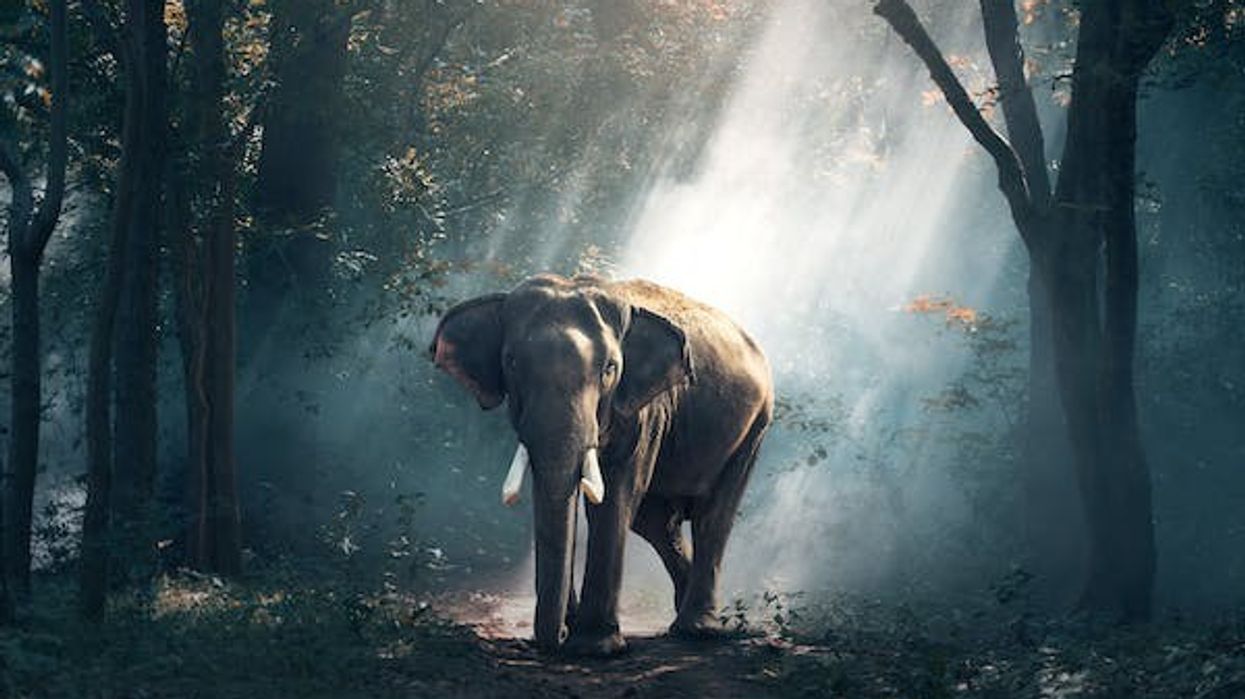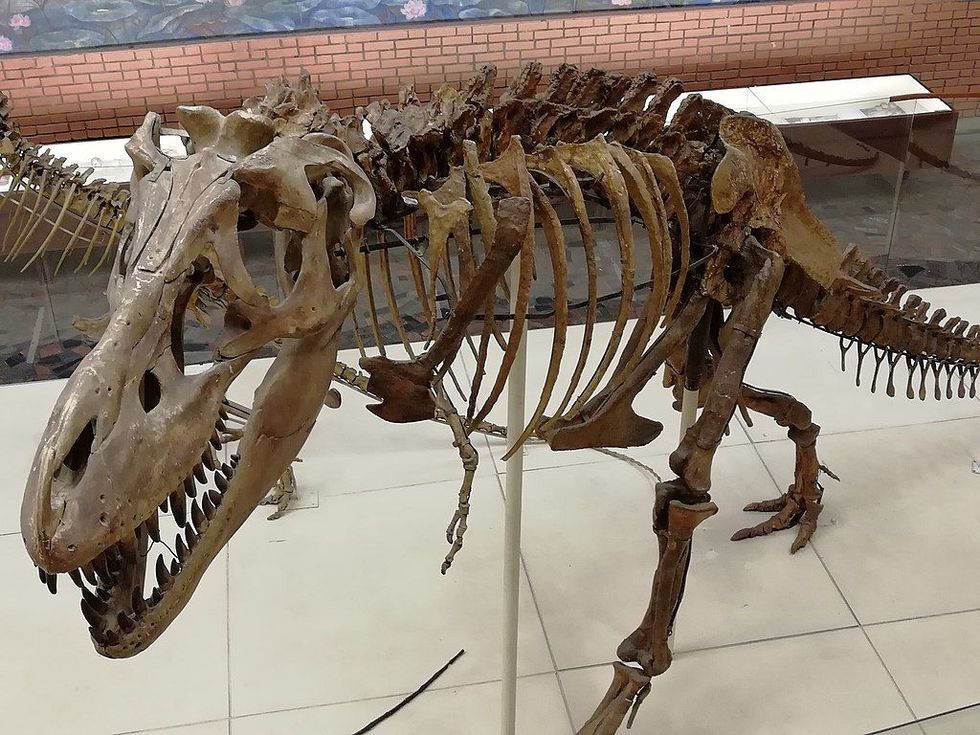The golden-rumped elephant shrew is perhaps one of the more interesting mammals belonging to the African continent. Found in forests near coastal Kenya, the mammal is known for its long, flexible snout and golden-colored rump.
The golden color on their rumps extends to their foreheads and hindquarters. Apart from their common name, this species is also referred to as the golden-rumped sengi.
Interestingly, the golden-rumped elephant shrew changes its nests quite frequently. These nests are usually made on the forest floor from leaves and other materials.
Did you know that the canines or the tooth of the golden-rumped elephant-shrew (Rhynchocyon chrysopygus) are bigger in males than females? This is because males hunt more often and bigger teeth help them to catch their prey.
Want to learn more interesting facts about this species of sengi? Scroll down to read more interesting facts! For other shrew species, take a look at southern short-tailed shrew facts and water shrew facts!
Golden-Rumped Elephant-Shrew Interesting Facts
What type of animal is a golden-rumped elephant-shrew?
The golden-rumped elephant-shrew (Rhynchocyon chrysopygus) is a species of elephant-shrew that is endemic to Kenya in Africa. These mammals are called elephant-shrews because of their long, flexible snout that resembles an elephant's trunk. Elephant-shrews are also known as sengis.
What class of animal does a golden-rumped elephant-shrew belong to?
Being a species of mammal, the golden-rumped elephant-shrew belongs to the class of Mammalia. Interestingly, recent research has suggested that elephant shrews are not really related to shrews. Instead, these species have links with other mammals like elephants, aardvarks, and sea cows.
How many golden-rumped elephant shrews are there in the world?
Endemic to the coastal region of Kenya, the population range of golden-rumped elephant shrews are on the decline. Conservation organizations like the International Union For Conservation of Nature state that the golden-rumped elephant-shrew have a total of 13,000 matured individuals living in their natural range.
However, as these estimates were made a while back, the total number of the golden-rumped sengi might have decreased further.
The primary reasons behind this decline are hunting, trapping, and the clearing of their forest habitat. As a result, the golden-rumped elephant-shrews have a conservation status of Endangered.
Where does a golden-rumped elephant shrew live?
Golden-rumped elephant shrews are found only in the coastal provinces of Kenya. To be specific, these elephant shrews are found mainly in the Arabuko Sokoke National Park.
The forests within this place have housed this species for many years. Apart from this forest, there are reports that golden-rumped elephant shrews can be found in forest patches near the city of Mombasa.
What is a golden-rumped elephant shrew's habitat?
The habitat range of golden-rumped sengi is limited to different forest types. Usually, this species inhabits moist, coastal scrub forests and lowland, semi-deciduous forests.
They are known to avoid going out in open areas away from the safety of the forest cover. A major part of the golden-rumped elephant shrew's days passes in the hunt of prey within the leaf litter in forests.
The most interesting behavior of this animal in its habitat is that it changes the nests that are built on the forest floor. This is, again, so that they are not detected by predators.
Who do golden-rumped elephant-shrews live with?
Unlike a male elephant that leaves the herd after 12-15 years, the golden-rumped elephant-shrews are primarily solitary in nature and live alone in their nests, except for the weeks when they are breeding.
This small species can be nifty over their territory, often getting into violent altercations with other intruding elephants shrews. The fight for the territory can be witnessed when golden-rumped elephant shrews fight and roll down the forest floor.
With regards to their nest building, there are some reports that suggest that the species change their nests every day while others report that they do so at an interval of one to three days.
How long does a golden-rumped elephant-shrew live?
As per reports, the golden-rumped sengi has a lifespan in the range of four to five years in the wilderness of their forest habitats.
How do they reproduce?
The breeding between a female and a male golden-rumped sengi occurs all year round. These small animals are monogamous and usually pair for life.
The pairs of this species have a specific home range and will vigorously defend off their territory from any invader. If others of their own species invade their home range, golden-rumped elephant-shrews fight on the basis of their gender, i.e., males within each other while females fight within themselves.
Generally, once the mating is complete, females give birth to the young of the species after a gestation period of 38-42 days, or five to seven weeks. Interestingly, the young shrew becomes independent at around five days but does not leave the nest immediately.
The young sengi will only leave their parents once they are old enough to define and guard their own range and this usually occurs around five to 20 weeks after their birth. However, the exact time taken by them to grow fully is not known.
What is their conservation status?
According to the evaluation done by the conservation organization IUCN or the International Union For Conservation Of Nature, the golden-rumped elephant-shrew has been listed as Endangered. The reason for this status is the rapidly declining population of the species of elephant shrew or sengi.
While conservation efforts have been taken to stop the animals from being hunted, the loss of habitat and deforestation plays a major role in threatening the species.
Golden-Rumped Elephant-Shrew Fun Facts
What do golden-rumped elephant-shrew look like?
 *We've been unable to source an image of a golden-rumped elephant-shrew and have used an image of an elephant-shrew instead. If you are able to provide us with a royalty-free image of a golden-rumped elephant-shrew, we would be happy to credit you. Please contact us at hello@kidadl.com.
*We've been unable to source an image of a golden-rumped elephant-shrew and have used an image of an elephant-shrew instead. If you are able to provide us with a royalty-free image of a golden-rumped elephant-shrew, we would be happy to credit you. Please contact us at hello@kidadl.com.The appearance of the golden-rumped elephant shrew is very interesting. The name of the species comes from the distinctive golden coloration on the rump. The elephant part of their name is derived from their long, flexible snout. This flexible snout resembles an elephant's trunk and is used by them to hunt due to being quite sensitive to their surroundings.
Interestingly, apart from the rump, the forehead and the hindquarters are also golden in color. Golden-rumped elephant shrews also have a sort of a dermal guard on their skin.
The skin of the rump is quite thick, it is actually three times thicker than the skin on their head. This acts as a way of protection for the species from their predators.
They also have a long tail that is almost the length of their body. The coloration on the tail is black with a dark tip and a white patch.
How cute are they?
Even though they do not really fit the conventional measures of cuteness, this small mammal can be cute and adorable to many people.
How do they communicate?
The communication between the golden-rumped elephant shrews is not really known, except for certain physical and auditory cues. Whenever these animals feel the presence of predators who have spotted them, they warn them by slapping the tail onto the leaf litter. Moreover, the golden-rumped elephant shrew pairs use scents to mark each other.
How big is a golden-rumped elephant-shrew?
The golden-rumped elephant-shrew is a small animal. The size of these creatures varies from 10.5-11.5 in (27-29 cm) with a tail length that is slightly smaller than the body length. In comparison, other shrew species like the long-tailed shrew is almost three to four times smaller than the golden-rumped elephant shrew.
How fast can a golden-rumped elephant-shrew run?
Due to the presence of a muscular body and legs, golden-rumped elephant-shrews are fast runners. They have been reported to run at a speed of 16 mph (25 kph).
How much does a golden-rumped elephant-shrew weigh?
The weight of the golden-rumped elephant-shrew is usually around 1.2 lb (54o g).
What are the male and female names of the species?
There are no distinct names for the males and the females of the species.
What would you call a baby golden-rumped elephant-shrew?
A baby golden-rumped elephant shrew is called a juvenile.
What do they eat?
Due to their nests on the forest floor, the golden-rumped elephant-shrew spent almost all their time foraging within leaf litter. They are insectivorous creatures and feed on grasshoppers, millipedes, spiders, beetles, and other small invertebrates.
Are they dangerous?
These forest-dwelling small creatures, are not dangerous and do not have any poison in them.
Would they make a good pet?
Golden-rumped elephant shrews are an Endangered species and it isn't a good idea to keep them as pets.
Did you know...
Males of this species have thicker skin to give them better protection from their predators. Predators of the species include snakes and birds of prey.
Why is the golden-rumped elephant shrew endangered?
The golden-rumped elephant shrew is an Endangered animal due to hunting, and deforestation, and fragmentation of their natural habitats.
What animal never stops growing?
There are many animals that never stop growing in the life cycle. Some of them are lizards, sharks, coral, and some species of amphibians!
Here at Kidadl, we have carefully created lots of interesting family-friendly animal facts for everyone to discover! For more relatable content, check out these American Akita facts and giant sable antelope facts for kids.
You can even occupy yourself at home by coloring in one of our free printable shrew coloring pages.
Main image by Steve Garvie.
Second image by Yathin S.




 *We've been unable to source an image of a golden-rumped elephant-shrew and have used an image of an elephant-shrew instead. If you are able to provide us with a royalty-free image of a golden-rumped elephant-shrew, we would be happy to credit you. Please contact us at hello@kidadl.com.
*We've been unable to source an image of a golden-rumped elephant-shrew and have used an image of an elephant-shrew instead. If you are able to provide us with a royalty-free image of a golden-rumped elephant-shrew, we would be happy to credit you. Please contact us at hello@kidadl.com.



